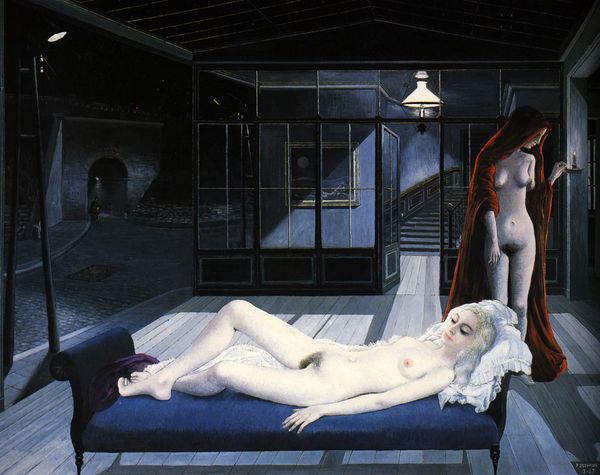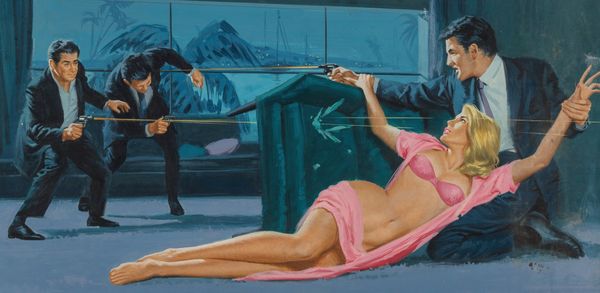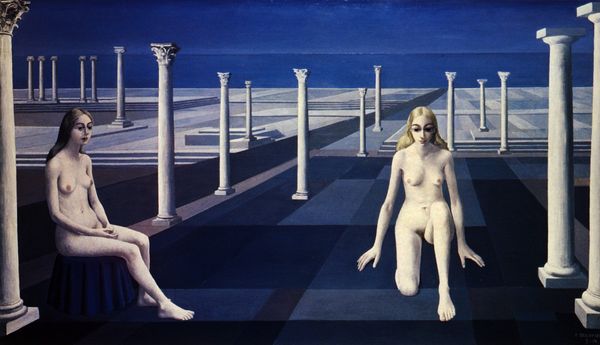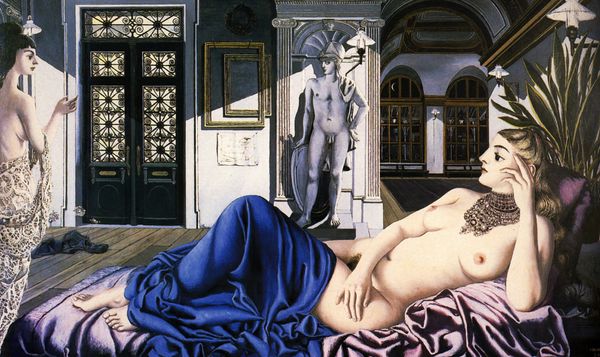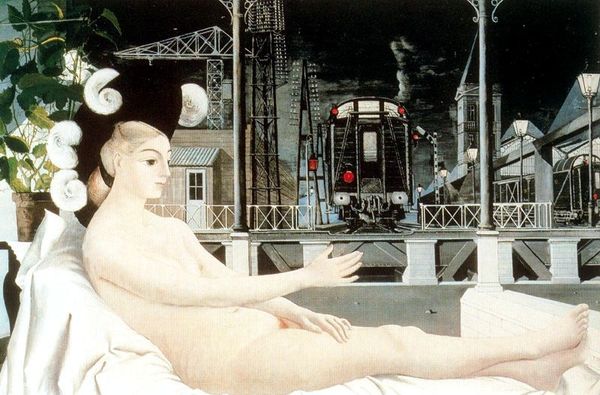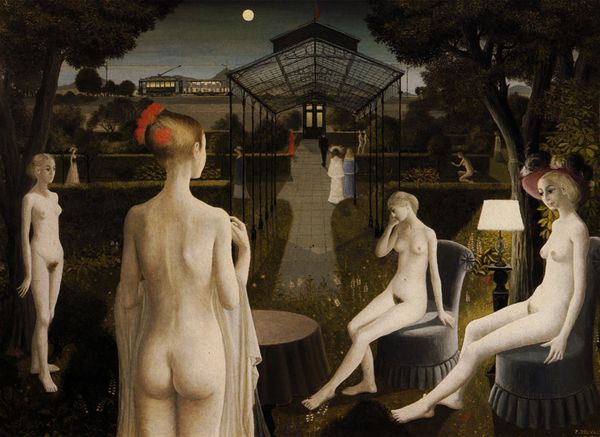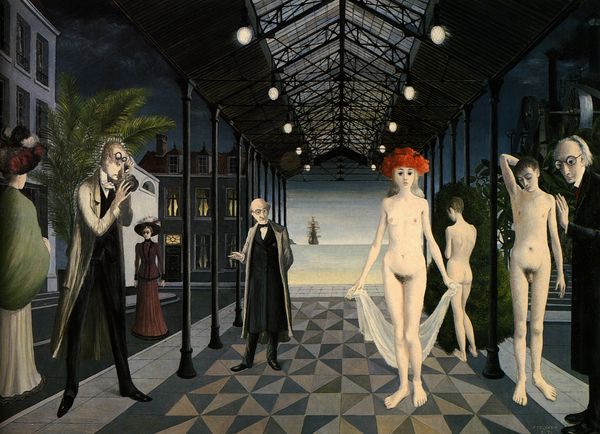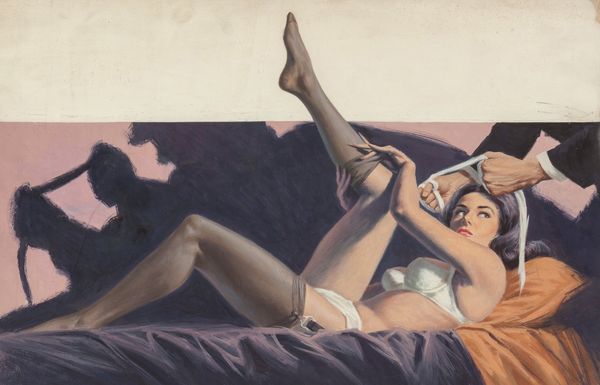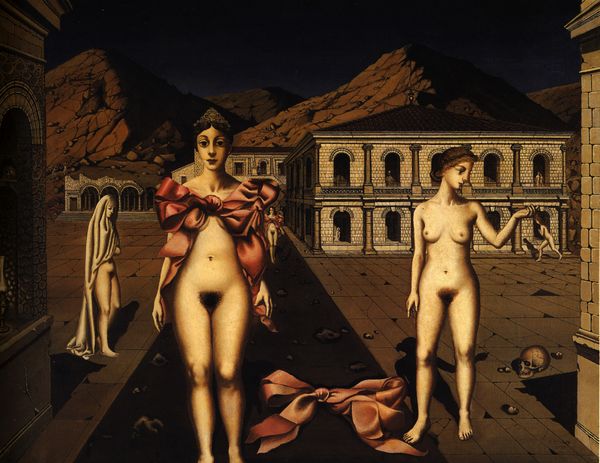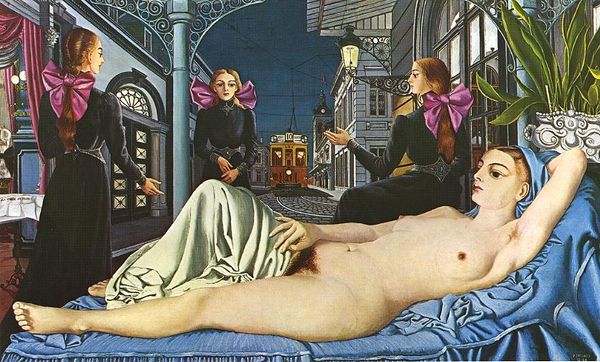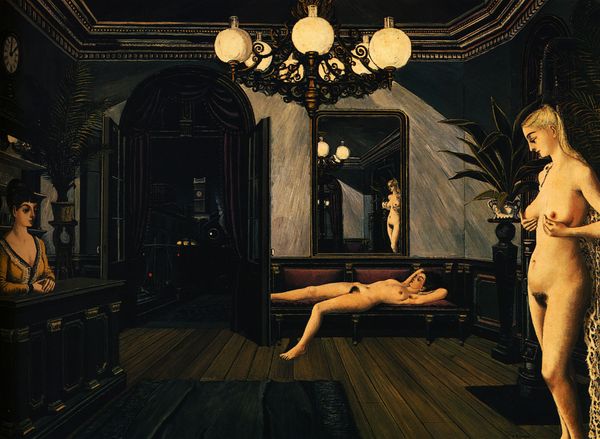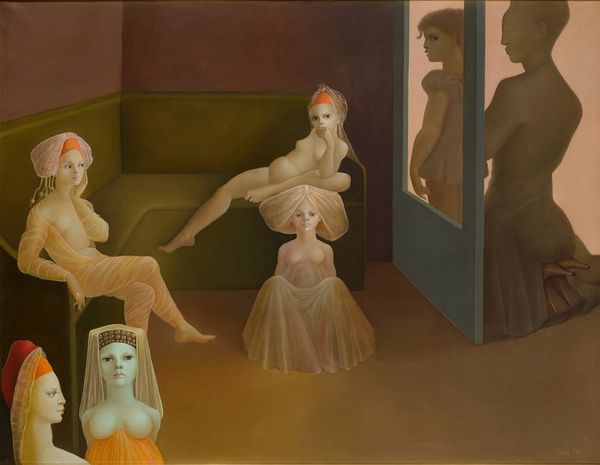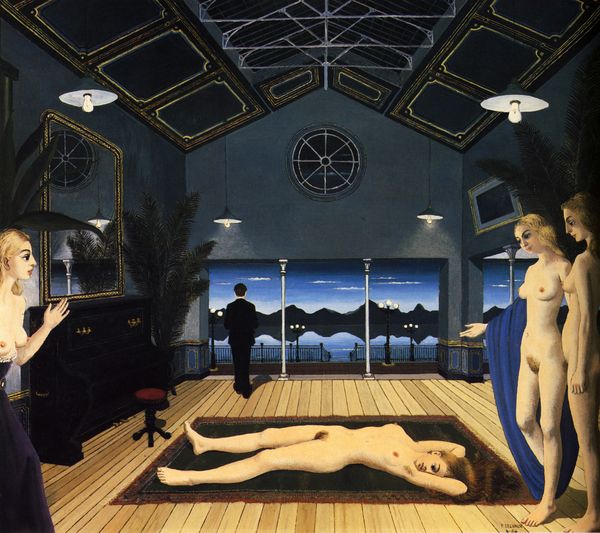
painting, oil-paint
#
narrative-art
#
painting
#
oil-paint
#
vehicle
#
landscape
#
figuration
#
female-nude
#
road
#
cityscape
#
surrealism
#
modernism
Dimensions: 150 x 240 cm
Copyright: Paul Delvaux,Fair Use
Curator: The trolley in Delvaux's "The Visit to Ephesus" from 1973, rendered meticulously in oil paint, it is tempting to focus solely on the classical allusions in the cityscape backdrop and the female figures, but that is missing the larger socio-historical point. What's your reading? Editor: It does feel very dreamlike and a little unsettling. I see classical architecture, almost like a stage set, and there's a tram! And nude women... it's such a strange mix of historical and... well, industrial elements, and nudes that harken back to classic paintings. Why Ephesus? What am I missing? Curator: Ephesus, a major site for early Christianity. And here the trolley disrupts the timeless quality of the city and its classical themes. The materiality is rich -- how is the paint handled and distributed to reinforce power relations and challenge hierarchies? Editor: So you're saying the choice of a city important for religion, combined with a new-fangled mode of transport, affects the meaning? Like how technological advancements influence culture, and vice versa? Is the way he applies the oil paint supposed to affect the historical power dynamics, or to highlight the artist's involvement in those dynamics? Curator: Precisely. Consider Delvaux's artistic choices. The smooth application of the oil paint emphasizes its illusionistic quality, referencing both academic training and the encroaching modernity of mass-produced imagery that would flood popular consciousness soon after this piece was painted. Does his realism highlight a tension? Editor: I think so, especially how real and 'manufactured' the scene looks all at once. I now notice it emphasizes the unsettling mood of these classic themes meeting modernity in almost mass produced painting processes. Curator: Indeed, so that tram becomes more than a mere vehicle; it's a disruption to these norms of classical painting through Delvaux's process. Editor: Wow, I never would have thought to look at it that way. The trolley seemed just quirky. Curator: It is that! These components open the work up so we consider more. It’s this kind of juxtaposition and production process of the time which ultimately creates this unique modern artwork and lets it defy historical high art hierarchies. Editor: I definitely understand it better. I appreciate that take on this artwork as I couldn't reconcile its individual parts at first.
Comments
No comments
Be the first to comment and join the conversation on the ultimate creative platform.
